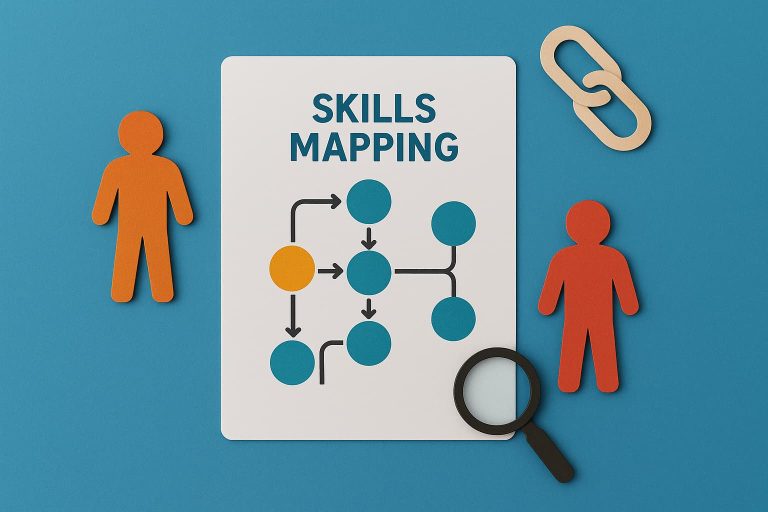Did you know that 77% of companies have reported leadership gaps within their organization, highlighting the need for better hiring strategies. This is where skills mapping emerges as a game-changer for HR teams, enabling them to take on a more strategic approach for strengthening leadership pipelines.
Rather than focusing solely on job titles, skills mapping breaks down leadership roles into the specific skills required to succeed. This enables the identification of skill gaps and the level of training needed to address them. Following this, HR teams can design targeted training programs, craft innovative recruitment strategies, or even realign internal talent to fill those gaps.
What is skills mapping?
Skill mapping is the process of identifying, documenting, and assessing the skills of employees within an organization. It lays the groundwork for tackling hiring challenges by aligning existing employee skills with evolving job roles, creating career development pathways, and ensuring strong alignment with your organization’s strategic goals.
“You can’t connect the dots if you can’t see them. Skill mapping helps you reveal the dots and unlock the leadership potential of your dream team.”-Testlify
Top 5 benefits of skills mapping
Top 5 Benefits of Skills Mapping
- Holistic Workforce Insights
- Targeted Training Opportunities
- Benchmark Employee Skills
- Unearth Internal Talent
- Reliable Performance Tracker
According to Deloitte, organizations that utilize a skill-based operating model are 98% more likely to retain top performers, many of whom possess significant leadership potential. But here’s the unfortunate reality: 54% of companies struggle even to identify the best candidates suited for leadership roles. Therefore, HR teams must prioritize skills mapping initiatives to identify future leaders from within their workforce. Here is a list of the key benefits of skills mapping, tailored for HR teams looking to close leadership gaps:
- Holistic workforce insights: Skills mapping enables HR teams to identify employees who demonstrate essential competencies like strategic thinking, financial acumen, and people management for filling existing leadership roles.
- Targeted training opportunities: Skills mapping exercise pinpoints who could benefit from extra training. For instance, it may reveal that a certain manager needs to level up their strategic thinking, or a team lead could use a boost in emotional intelligence.
- Benchmark employee skills: Leveraging leadership skill assessment tests as a part of your skills mapping process can help HR teams benchmark the hard and soft skills of chosen employees against industry standards. This enables you to determine the current capabilities of your future leaders accurately (helps you see who’s excelling and who might need a bit more support to step into their designated leadership role).
- Unearth internal talent: 9 out of 10 times, employees with leadership potential may not actively seek out leadership roles. Furthermore, HR teams also tend to go headhunting for active candidates to fill leadership roles, even when top talent exists in-house. Skills mapping extends beyond surface-level assessments by identifying employees who possess leadership potential but have gone unnoticed.
- Reliable performance tracker: Skills mapping is a continuous process rather than a one-time activity. By regularly monitoring progress, you can identify employee skill gaps, create opportunities for improvement, and ensure leadership training initiatives stay on course.
Leadership skills mapping process explained
Leadership Skills Mapping Process Explained
- Define the Needed Skills
- Manage Resource & Skill Allocation Within Each Skill Matrix
- Conduct Skills Assessments
- Collect the Feedback
- Analyse the End Results
1. Define the needed skills
Firstly, it’s essential to determine whether the current skill set of employees aligns with the broader strategic goals of the business. Begin by listing the leadership job vacancies within your organization and the skills (hard & soft skills) necessary to fill them. Ensure that job descriptions are up-to-date and accurately reflect the current requirements. This provides a clear framework for defining the skills needed to close leadership gaps.
2. Build targeted skill matrices
A key objective of skills mapping is to create clarity in how skills are distributed across your organization, and a skill matrix is an effective tool for achieving this. A skills matrix helps organizations visualize and track the skills, competencies, and proficiencies of their employees.
However, it is important to avoid simply placing all employees and skills into a single skill matrix. Instead, HR teams must take the initiative to create multiple matrices tailored to specific teams or departments.
Here’s how to effectively structure your skill matrices:
- Create separate matrices for different teams: Group employees based on their roles or departments, such as sales, marketing, or product development. Each team will possess a unique set of skills required to meet their specific objectives, so evaluating them individually ensures that the right skills are identified.
- Distinguish between hard and soft skills: While hard skills (e.g., technical expertise, industry knowledge, and certifications) are often easier to quantify, soft skills (e.g., communication, leadership, and problem-solving) are just as crucial. Create separate matrices for these two categories to better assess where there are gaps in both technical and interpersonal capabilities within each team.
- Assess skill proficiency levels: Within each matrix, define the proficiency levels for each skill. Use a scale such as beginner, intermediate, advanced, or expert to identify the exact level of expertise possessed by each of your employees.
- Align with business objectives: Link each skills matrix to your broader business goals. For example, if expanding into a new market is a strategic goal, your marketing and sales teams’ matrices might emphasize cultural competency, language skills, or digital marketing expertise.
3. Conduct skills assessments
Next, you can conduct a comprehensive skills assessment to evaluate employees’ ability level for the requisite skills. Testlify offers a library of over 3000+ pre-built assessments, including aptitude, behavioral, technical, and psychometric evaluations. These assessments cover critical areas, including time management, communication, emotional intelligence, empathy, conflict resolution, motivational skills, and more. Furthermore, HR teams have the freedom to customize and design tailored assessments for specific leadership roles fully.
4. Collect leadership feedback
HR teams must solicit feedback from existing leaders on the strengths & weaknesses they observed during the evaluation process. This provides a well-rounded perspective on the competencies of all candidates primed to fill a leadership position within the organization.
Testlify enhances this process with AI-insights, which are auto-generated summaries that accurately showcase a candidate’s overall performance. The platform also features a weighted scoring system that prioritizes key skills and competencies, enabling accurate leadership evaluations.
5. Analyse the end results
Look for patterns in your assessment results.
- Are there common skill gaps across your leadership team?
- Are there standout performers who could mentor others?
Answering such questions can help HR teams identify specific competencies that need improvement and develop learning programs to support employees to grow into leadership roles. Testlify provides global benchmarking analytics, which is extremely useful for evaluating candidate performance against global standards. This enables HR teams to make data-driven decisions and gain deeper insights into candidate performance relative to both internal and external benchmarks.
Best skills mapping template for HR teams
For senior leadership roles, such as CFO or CEO, individuals need to possess a specific set of skills that enable them to perform their job admirably. To help HR teams identify the best candidate, we have come up with a comprehensive skills mapping template that can help you get started.
Skills Mapping Matrix Template
Instructions
- Required skills: List the key competencies required for both roles.
- Assessment scale: Rate the candidates’ proficiency in each skill (e.g., Low, Medium, High, or a 1-5 scale).
- Development needs: Identify any gaps or areas where the candidate may need further development.
- Identify strengths & gaps: The matrix will help you visually identify the strengths and weaknesses of each candidate for both the CFO and CEO roles.
- Targeted development: For any medium or low scores, note down specific areas for improvement and create tailored development programs.
- Make informed decisions: Use the matrix to determine which candidate is best suited for the position, ensuring they meet the critical competencies needed for the role.
Key competencies breakdown:
- CFO competencies: The CFO needs to be proficient in financial acumen, risk management, strategic thinking, and stakeholder management. Their role requires advanced financial expertise, leading the financial strategy, and ensuring the organization’s financial health.
- CEO competencies: The CEO, on the other hand, requires a broader skill set. Strategic thinking, leadership & team management, and communication skills are crucial. The CEO also needs expertise in change management, business development, and global perspectives to ensure company-wide success.
This skills mapping template provides a detailed framework for assessing candidates for the CFO and CEO roles, allowing HR teams to make data-driven decisions regarding leadership roles in the organization.







